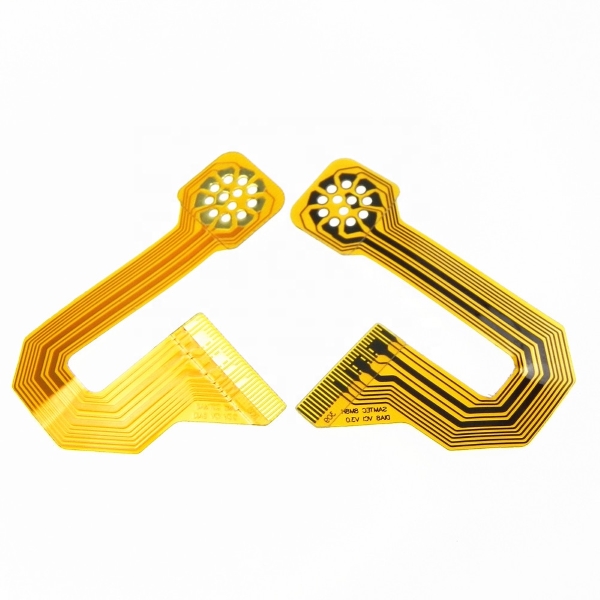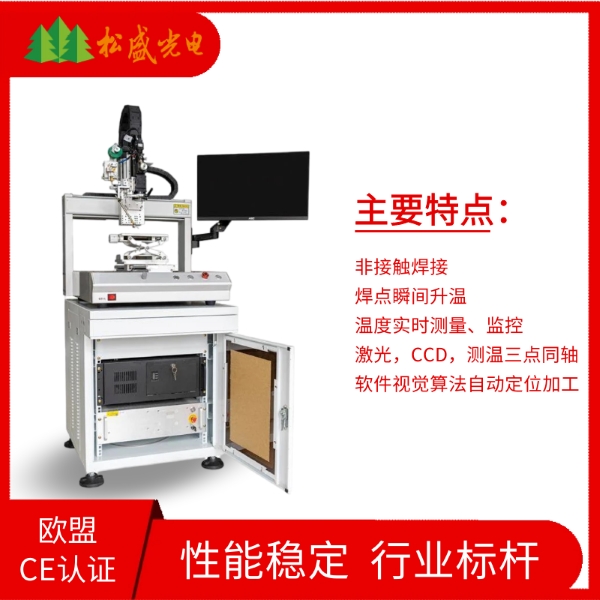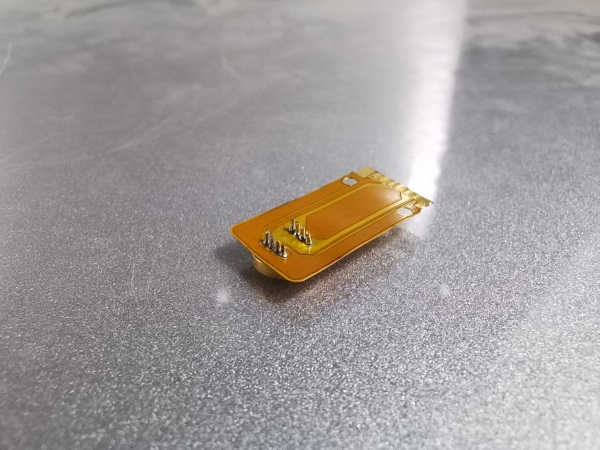FPC Laser Spot Welding Standards and Precautions
FPC Laser Spot Welding Standards
FPC (Flexible Printed Circuit), also known as flexible circuit board, has gained widespread popularity due to its lightweight, thin profile, and excellent bendability/foldability. With the rapid development of the electronics industry, circuit board designs are increasingly trending toward higher precision and density, consequently raising the welding process requirements for downstream FPC products.
From manual FPC soldering to automated welding equipment, and from traditional soldering irons to the now widely adopted laser welding, FPC soldering has undergone multiple technological revolutions. Today, it has matured into a robust technical application. Songsheng Optoelectronics is here to provide an introductory overview.

Appearance Standards
Solder Joint Shape:
The solder joint shall form a uniform hemispherical or near-hemispherical shape with a smooth, continuous surface free from visible irregularities, pores, cracks or other defects. The edges of the solder joint shall be clear and neat, forming tight integration with the FPC pads without cold solder joints or missing soldering.
Solder Joint Color:
The solder joint color shall be uniform, exhibiting the bright metallic luster characteristic of tin. Any oxidized discoloration (e.g., blackening or darkening) on the solder joint surface may affect electrical conductivity and reliability, requiring appropriate treatment.
Solder Splatter:
Excessive solder splatter shall be avoided during the welding process. Splatter particles adhering to the FPC surface may affect appearance and potentially cause electrical performance issues such as short circuits. Any splatter shall be promptly and thoroughly removed.

Dimensional Standards
Solder Joint Diameter:
The solder joint diameter shall be controlled within a specified range according to FPC design requirements and welding parameters. For typical FPC spot welding, the diameter generally ranges between 0.2-0.8mm. Specific dimensions may be adjusted based on FPC pad size, pin pitch, and required welding strength.
Solder Joint Height:
The solder joint height shall be moderate, typically not exceeding 0.5mm above the FPC surface to prevent interference during subsequent assembly. Insufficient height may compromise welding strength.
Electrical Performance Standards
Contact Resistance:
Solder joint contact resistance shall meet relevant standards, typically below 50mΩ. Excessive resistance may cause poor conductivity. Measurement requires specialized contact resistance testers.
Insulation Resistance:
Solder joints must maintain proper insulation between adjacent joints and conductive traces, with resistance values exceeding 100MΩ to prevent short circuits. Insulation resistance testers shall be used for verification.
Mechanical Performance Standards
Welding Strength:
Joints must possess sufficient mechanical strength to withstand operational stresses. Standard evaluations include:
Tensile strength >1N/mm²
Shear strength >0.8N/mm²
Actual values may be adjusted per application requirements.
Fatigue Resistance:
Joints shall maintain structural integrity during dynamic flexing/folding operations, typically enduring ≥1000 bending cycles without cracking or detachment while retaining compliant electrical/mechanical performance.
Process Notes for Laser Soldering:
This advanced process employs high-energy laser beams for brief, precise heating of FPC pads to ensure fusion. Critical parameters include:
Precise laser duration control
Accurate temperature regulation
(Primarily applied to short-ribbon FPCs and electronic circuit boards with compact pad arrangements)

Continuous Welding Process for 8-Pin FPC Flexible Board Switch Ribbon Cable Connectors
The system consists of Songsheng Optoelectronics' laser constant-temperature soldering with real-time temperature feedback, CCD coaxial positioning system, and semiconductor laser. Featuring a proprietary PID online temperature regulation feedback system, it effectively maintains constant-temperature soldering with real-time high-precision temperature control, ensuring superior soldering yield and accuracy. This solution is particularly suitable for temperature-sensitive precision soldering applications such as FPC flexible boards, micro speakers/motors, connectors, cameras, etc.
Precautions for FPC Laser Welding
A. Semiconductor lasers or other laser types may be used for FPC ribbon cable soldering;
B. The FPC ribbon cable gold fingers and pads must be perfectly aligned. Ensure the gold fingers lie completely flat on the PCB pads without any misalignment or lifting before welding;
C. Use intermittent spot soldering when adding solder, carefully controlling the amount of solder applied;
D. Apply moderate drag soldering force on the pads, with each FPC ribbon cable gold finger soldering time not exceeding 4 seconds;
E. The solder joint height for FPC ribbon cable gold fingers must not exceed 0.4mm;
F. Solder joints on FPC ribbon cable gold fingers must be smooth without spikes, and the gold fingers must show no floating, cold solder joints, bridging, spikes, lifting, or other defects.
Contact: Mr.Xiao
Phone: +86-13385280662
E-mail: market001@whlaser.cn
Add: Room 02, Floor 5, Building 9, Gezhouba Sun City, No. 40, Gaoxin 4th Road, Donghu New Technology Development Zone, Wuhan